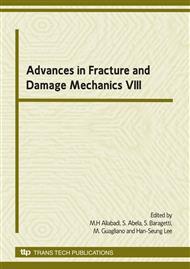p.837
p.841
p.845
p.849
p.853
p.857
p.861
p.865
p.869
Finite Element Prediction of Laser Shock Peened Surface Modifications in Ti-6Al-4V Alloy
Abstract:
This paper presents a numerical simulation of the Laser Shock Peening process (LSP) using finite element method. The majority of the controlling parameters of the process have been taken into account. The laser loading has been characterised by using a repetitive time Gaussian increment pressure applied uniformly at circular impacted zone. The behavior of the subjected material is supposed to be elasto-visco-plastic coupled with damage using the Johnson Cook law with his shear failure model. The proposed model leads to obtain the surface inducing modifications, which are classified in this work into three categories: (i) the in-depth residual stress profile, (ii) the induced plastic strains profile and (iii) also the superficial damage which can be induced in few cases where the operating conditions are not well chosen. An application on a laser shock peened super alloy Ti-6Al-4V has been carried out. The comparison of the residual stresses, obtained by X-ray diffraction method and by finite element calculation, shows a good correlation.
Info:
Periodical:
Pages:
853-856
Citation:
Online since:
October 2009
Authors:
Price:
Сopyright:
© 2010 Trans Tech Publications Ltd. All Rights Reserved
Share:
Citation:


